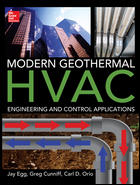The first thing you should know about ultraviolet lighting in duct systems is that it is NOT a substitute for duct cleaning. And, despite studies showing UV’s effectiveness in killing COVID-19, it is not a cure all for indoor air quality. There are a lot of factors that come into play when talking about UV’s relationship with killing airborne pathogens and allergens in HVAC systems. Knowing fact from fiction will serve you well in providing the right solution for the building owner’s needs.
I. There are three types of UV light: UVA, UVB, and UVC, each representing a different section of the UV light spectrum. Type C, known as UVC, is the form used for germicidal activity.
II. UVGI is what deactivates pathogens: When UVC light is used for germicidal purposes, it is referred to as UVGI, ultraviolet germicidal irradiation. UVGI “deactivates” or kills microorganisms, including viruses, bacteria, molds, and other fungi by disrupting their DNA. “Deactivated” means the organism is not necessarily killed but can no longer reproduce. Some deactivate after microseconds of exposure while others require much longer exposure (including coronavirus).
III. The right conditions make a difference: There are a number of factors that depend on the effectiveness of UV light, including intensity or power of the lamps, length of time of exposure, environmental conditions, and an organisms general ability to withstand UVGI.
On hard surfaces, like evaporator coils and drain pans, where UVGI exposure is constant and within adequate proximity, the kill rate for organisms contacted is up to 99.9 percent. However, deactivating bioaerosols is a more complex activity.
A common question asked is, “How effective is UVGI at killing (deactivating bioaerosols in the airstreams of HVAC systems?” The answer is, “The technology can be effective, but many variables can impact its effectiveness.”
VI. UVGI in duct systems: UVGI in HVAC systems has been studied and reviewed extensively by many scholars internationally and, of course, ASHRAE — the leaders in the HVAC engineering field, and by government agencies.
Studies of UVGI in commercial HVAC systems are not common. However, one study of office systems reports a 25-30 percent reduction in airborne bacteria when UVGI was used on HVAC drip pans and cooling coils. Comparable results would require approximating the conditions of the study, including the number of lamps used, lamp intensity, lamp placement, and the initial condition of the drip pans and cooling coils.

White Paper from the National Air Duct Cleaners Association
V. Proper Placement Is Key: Since improper placement of UVC lamps can result in poor efficiency and hazards, it is recommended that anyone installing UVC lamps in HVAC systems be fully educated on the matter and related issues.
Be cautious about UVGI claims. Organisms vary dramatically in how quickly they deactivate from UVGI. Bacteria deactivate faster than fungi spores by an approximate factor of 200:1.3 Some bacteria and mold spores are resistant to UVGI. The rates (length of exposure and wattage) required for deactivating specific species of microorganisms are available in various reference materials on UVGI.
Read more about UV applications from the National Air Duct Cleaners Association.











